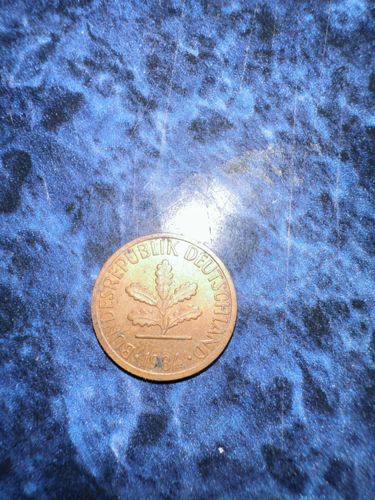Pfennig
Country of Origin: West Germany (Bundesrepublik Deutschland)
Year of Issue: 196X (partially obscured, likely 1960s judging by wear)
Denomination: 1 Pfennig
Composition: Copper-Clad Steel (Steel core with copper plating)

Brief Description
The obverse of the coin features an oak sprig with a few leaves and an acorn, symbolizing strength and endurance, surrounded by the inscription "BUNDESREPUBLIK DEUTSCHLAND" (Federal Republic of Germany). The year of issue is below the oak sprig. The reverse typically shows the numeral '1' for the denomination.
Historical Significance
The Pfennig was a denomination of the Deutsche Mark, the currency of West Germany from 1948 until the introduction of the Euro in 2002. The oak leaf design is a common motif in German numismatics, symbolizing the German nation. These coins were widely used in daily transactions during the post-WWII reconstruction and economic boom (Wirtschaftswunder) in West Germany.
Estimated Value
In circulated condition, a 1 Pfennig coin from the 1960s is generally of very low monetary value (a few cents/pence to under a dollar), primarily due to its high mintage numbers. Uncirculated or proof examples would fetch slightly higher prices, but generally remain inexpensive. Value can be higher if it's a rare mint mark or a key date for the series, but standard issues are common.
Care Instructions
To preserve the coin, avoid cleaning it as this can reduce its numismatic value. Handle by the edges to prevent oils from your skin from damaging the surface. Store in a dry, stable environment, ideally in inert coin holders (e.g., Mylar flips or acid-free cardboard holders) to protect it from environmental damage and physical wear.
Created At: 2025-09-06T11:27:51.332027